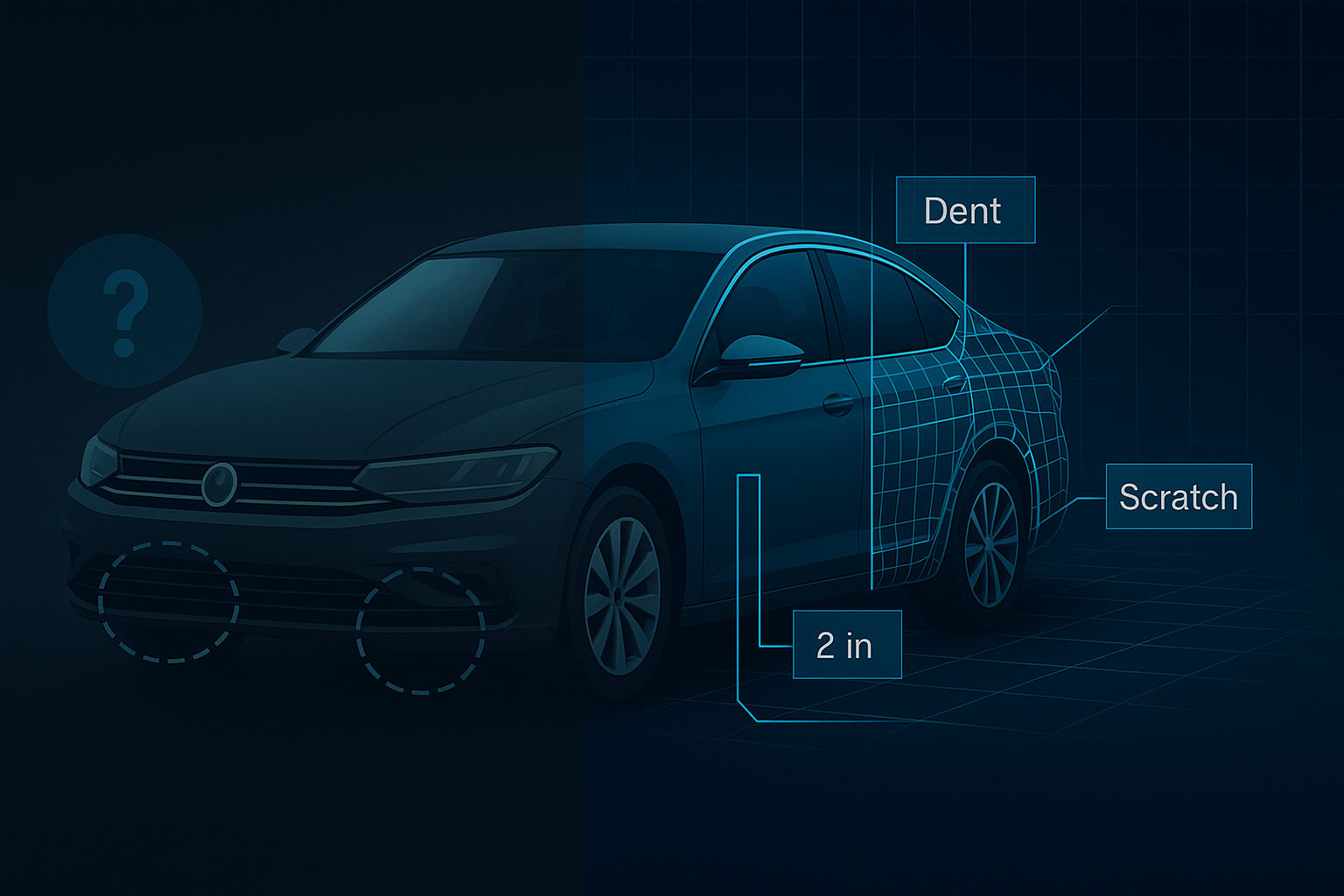Precise measurement
Precise measurement of damage size holds paramount importance for various automotive and insurance stakeholders in their decision-making processes. It enables insurers to offer comprehensive premium plans and assists rental and leasing businesses in maintaining fleet health.
Measuring Damage Size in Car Inspection
This article delves into the methodology of measuring damage size on automobiles. It initiates by establishing a foundational comprehension of damage size, followed by discussing its relevance and significance in inspection processes. Additionally, it explores methods for determining damage size and the associated challenges, concluding with a case study on hail damage.
Assessment
When assessing damage size on automobiles, sedans often bear the brunt of it. Comparatively lighter than trucks and SUVs, sedans are more susceptible to damage during accidents, influenced by factors such as impact angle and velocity. Evaluating damage size is pivotal during car insurance inspections, where categorizing and documenting each damage is imperative. The number, size, and severity of damages significantly influence subsequent actions required by car owners. Let's explore the importance of damage size and how vehicle inspection systems aid in its determination.
Understanding Damage Size
Damage size refers to the actual dimensions of inflicted harm. Measuring the length, width, and depth of damage aids in determining its size. Length and width measurements apply to damages like scratches or glass cracks, while depth is relevant for assessing dents.
Relevance and Importance of Determining Damage SizeUnderstanding damage size is crucial for subsequent actions post-inspection. Rental and leasing businesses, upon vehicle return, assess damage size to determine customer charges. For instance, scratches exceeding one inch may require repairs, necessitating customer payment. Maintenance of fleet aesthetics and safety also hinges on accurate damage size assessment. Auto insurers utilize damage size to decide repair or replacement of parts and determine vehicle condition, influencing insurance premiums. Damage size also hints at potential internal damages, such as dent depth indicating underlying issues.
Method to measure damage size
Damage size can be measured using photos and videos, employing two approaches. Firstly, relative size analysis compares damage to surrounding parts. Tchek's computer vision technology identifies damaged parts in media, allowing approximate damage size determination relative to known part dimensions. Additionally, customers can use standard objects for size reference, such as placing a credit card next to windshield cracks. Secondly, augmented reality and 3D modeling enable precise measurements, similar to iPhone dimension measurement applications.
Challenges in Determining Damage Size
Several challenges impede accurate damage size determination. Assessing depth through photos and videos is limited by their 2D nature, with depth approximation being common. Advancements like LIDAR offer improved depth perception potential. Varied customer capture perspectives, often zoomed, obscure part identification and boundary delineation, hampering size comparison. Atypical damage shapes, like scratches, further complicate size assessment, introducing subjectivity.
Conclusion
Accurate damage size measurement is pivotal for automotive and insurance stakeholders in decision-making. Technological advancements promise enhanced measurement accuracy, signaling a progressive shift in inspection frameworks.





